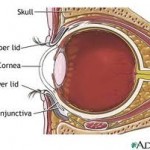 Postoperative visual loss is a rare but catastrophic event that has an increased in frequency with robotic surgery in the steep head-down position. Studies have been conducted and reported in the literature relating intraocular pressure to postoperative visual loss. One study conducted in the steep head-down position with laparoscopic surgery demonstrated increased intraocular pressure as time progressed. Normally, cerebral and ophthalmic circulatory autoregulation prevent increased intraocular pressure, however, this may not be the case during general anesthesia in the steep head-down position.
Postoperative visual loss is a rare but catastrophic event that has an increased in frequency with robotic surgery in the steep head-down position. Studies have been conducted and reported in the literature relating intraocular pressure to postoperative visual loss. One study conducted in the steep head-down position with laparoscopic surgery demonstrated increased intraocular pressure as time progressed. Normally, cerebral and ophthalmic circulatory autoregulation prevent increased intraocular pressure, however, this may not be the case during general anesthesia in the steep head-down position.
Research conducted by Bonnie Molloy, CRNA, PhD (A Preventive Intervention for Rising Intraocular Pressure: Development of the Molloy/Bridgeport Anesthesia Associates Observation Scale) and published in the AANA Journal (AANA Journal, June 2012, Vol. 80, No. 3) is a “must read” for any anesthesia provider administering anesthesia to patients in the steep head-down position. This comprehensive review of postoperative visual impairment following head-down surgery details the pathophysiology and describes observable, physical changes that will alert the observant provider that intraocular pressures are increasing.
Data obtained by the author revealed that increasing intraocular pressure in the patient in the steep head-down position correlates to increasing eyelid and conjunctival edema. These physical signs can be used to determine when it is advisable to level the patient and allow the intraocular pressures to decrease.
The result of this excellent, well documented study was the development of the Molloy/Bridgeport Anesthesia Associates Observation Scale. Using the signs of eyelid and conjunctival edema, the anesthetist can predict when intraocular pressures are increasing. The original work is complete with illustrations to guide the anesthetist in the use of the observation scale.
This original work was funded in part by a grant from the AANA Foundation and is essential knowledge for anybody routinely doing cases in the steep trundelenburg position lasting greater than 2-3 hours. Click here to view the original publication.
